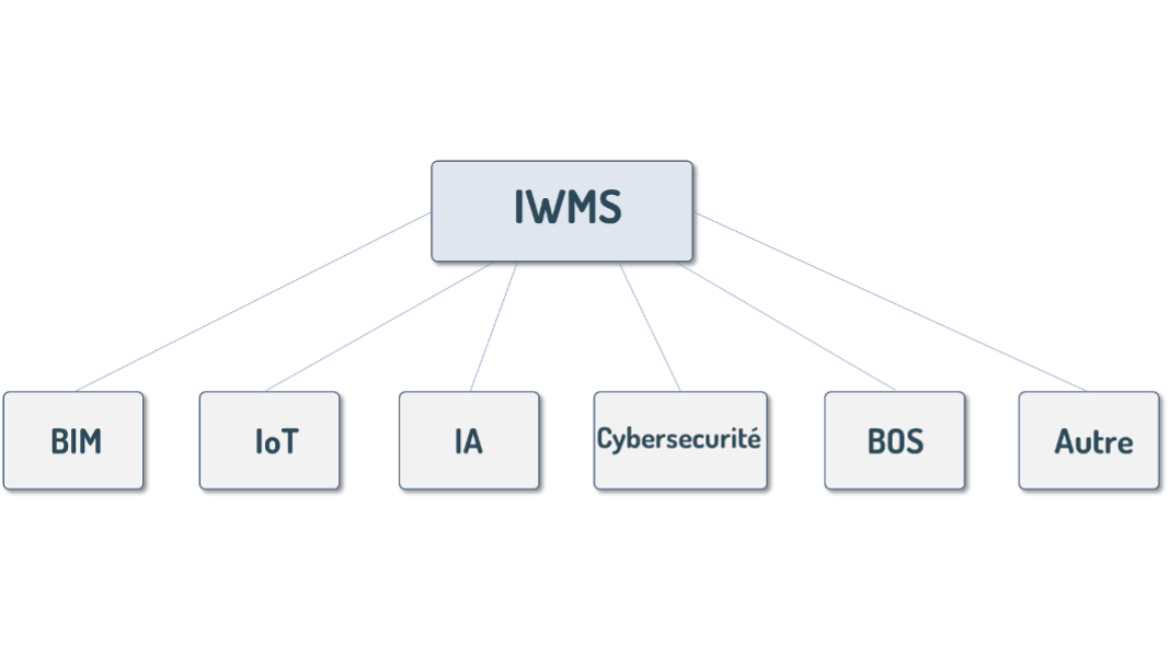Optimizing Space Management through IoT, AI, Blockchain and Immersive Technologies
1. Internet of Things (IoT)
IoT sensors collect real-time data on various aspects of buildings, such as dynamic space occupancy, air quality, temperature, and humidity. This data can be analyzed to optimize occupant comfort and energy efficiency. For example, sensors can automatically adjust air conditioning based on the number of people in a room, ensuring efficient energy use.
2. Artificial Intelligence (AI)
AI is used to analyze large amounts of data and provide recommendations to optimize building operations. For example, AI algorithms can predict maintenance needs based on historical equipment data and usage patterns. Additionally, AI-powered sensors can help analyze actual space usage by distinguishing the presence of individuals or their belongings.
3. 3D Modeling and Virtual/Augmented Reality (VR/AR)
These technologies are used for space design and planning. They allow projects to be visualized in 3D before they are built, facilitating decision-making and reducing the risk of costly errors. For example, architects and project managers can use VR to virtually walk through a building before it is built, identifying potential problems before they arise. Similarly, BIM (Building Information Model) technology is extremely useful for operating buildings since it provides an up-to-date and continuous repository of technical equipment.

4. Blockchain
Blockchain can secure real estate transactions and rental agreements by providing transparency and reducing the risk of fraud. For example, blockchain-based smart contracts can automate the rental process, ensuring that payments are made only when all contractual conditions are met.
5. Cybersecurity
The rise of cybercrime in all its forms requires an increased cybersecurity policy within companies that must imperatively secure access to sensitive information such as their building data, plans of premises/spaces, list of occupants as well as the inventory of equipment to name only the best known. These information security topics are increasingly legitimate and find a more than favorable echo within IWMS platforms that cover a large set of solutions at the expense of "point solutions"
6. BOS
The BOS (Building Operating System) is a middleware, i.e. a software that creates a network for exchanging information between different computer systems. It allows to break down the barriers between systems that are often installed locally (BMS, access control, etc.) in order to coordinate all the systems or equipment in the same building.

Challenges and Considerations
Despite the many benefits, adopting IWMS and new technologies also comes with challenges.
The initial costs of implementation and integration with existing systems can be significant, and training employees to use these new technologies effectively is essential to take full advantage of them.
Companies must also manage data security concerns, as IWMS and related technologies collect and store a large amount of sensitive data.

Current and Future Trends of IWMS
The future of IWMS in building management is bright, with several trends to watch in particular:
1. Growing Adoption of AI and Machine Learning
The integration of AI and its machine learning component into IWMS will continue to intensify, offering increasingly accurate predictive analytics and recommendations. For example, AI could be used to optimize the distribution of workspaces based on employee habits and business needs. This and other use cases are discussed in the Aremis webinar (link to the replay of the upcoming webinar).
2. Focus on Sustainability
The pressure to adopt sustainable practices will push companies to increasingly use this type of fully integrated platform to achieve their environmental goals. This includes on the one hand optimizing energy consumption, reducing waste but also on the other hand responding to regulatory constraints (tertiary decree) as well as strengthening their employer brand with a population that is increasingly concerned with CSR aspects.

3. Flexibility and Telework
With the increase in telework, the philosophy of this tool associated with its technological ecosystem will play a key role in the management of flexible spaces and in the optimization of shared offices. Companies will have to adapt their strategies to meet the changing needs of their employees, by offering flexible workspaces and hybrid work environments.
4. Improved User Experience
Improving the user experience is becoming a priority, with more intuitive interfaces and personalized features. Employees will be able to interact with the solution via mobile applications, facilitating access to information and management of daily tasks, in particular the display of interactive floor plans, which is already starting to be a real hit with occupants regardless of their age group, function or location.
5. Essential cybersecurity posture
The consolidation and consumption of all this ultra-sensitive data can only be achieved through a very secure IWMS (Archibus type) software that complies with the most demanding standards. But above all, this must be accompanied by an integrator who demonstrates an equally high cybersecurity policy and who benefits from solid and long-standing experience. At Aremis, (notably ISO27001 certified), we have been experienced in this exercise for many years now and work for organizations whose core business is extremely sensitive.

IWMS, combined with new technologies, is transforming real estate management by offering innovative solutions to optimize resources, improve efficiency and promote sustainability.
Companies that adopt these tools can not only reduce costs, but also create more pleasant and productive work environments.
As technologies continue to evolve, IWMS remains more than ever a central pillar of modern real estate management, helping companies navigate an ever-changing landscape and prepare for the future.
It further serenely strengthens its position as the nerve center of all data regardless of the new technology implemented.





